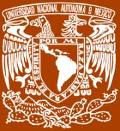Reconstruction of rockfall events using dendrogeomorphological techniques in a highly visited climbing area
Reconstrucción de eventos de desprendimiento de rocas mediante técnicas dendrogeomorfológicas en un área de escalada de alta demanda
Manuel E. Mendoza1,2,*, Orlando Lemus3, Teodoro Carlón Allende4, John J. Clague2, Pierre Friele5, Erna M. López Granados6, John R. Giardino7
1 Instituto de Geofísica, Unidad Morelia, Universidad Nacional Autónoma de México, Campus Morelia, Michoacán, México.
2 Centre for Natural Hazard Research (CNHR) Department of Earth Sciences, Simon Fraser University, British Columbia, Canada.
3 Posgrado en Ingeniería Ambiental, Universidad Michoacana de San Nicolás de Hidalgo, Morelia, Michoacán, México.
4 Secihti-Instituto de Geofísica, Unidad Michoacán, Universidad Nacional Autónoma de México, Campus Morelia, Michoacán, México.
5 Cordilleran Geoscience, PO Box 612, Squamish, British Columbia, Canada.
6 Instituto de Investigaciones en Ciencias de la Tierra, Universidad Michoacana de San Nicolás de Hidalgo, Morelia, Michoacán, México.
7 Department of Geology and Geophysics, Texas A&M University, USA.
Corresponding author: (M.E. Mendoza) This email address is being protected from spambots. You need JavaScript enabled to view it.
How to cite this article:
Mendoza, M.E., Lemus, O., Carlón Allende, T., Clague, J.J., Friele, P., López Granados, E.M., Giardino, J.R., 2025, Reconstruction of rockfall events using dendrogeomorphological techniques in a highly visited climbing area: Boletín de la Sociedad Geológica Mexicana, 77(1), A311024. http://dx.doi.org/10.18268/BSGM2025v77n1a311024
Manuscript received: June 12, 2024; Corrected manuscript received: October 15, 2024; Manuscript accepted: October 30, 2024
ABSTRACT
Stawamus Chief Provincial Park, north of Vancouver, British Columbia, is a popular climbing and hiking destination affected by frequent, potentially hazardous rockfalls. This study documents the recent rockfall history below the North Wall of Stawamus Chief using dendro geomorphological methods, providing a case study ‘proof-of-concept’ of the use of dendrogeomorphology for assessing rockfall hazards. We produced a geomorphic map of the North Wall based on an interpretation of lidar imagery and collected 245 samples from 74 rockfall-impacted trees (Tsuga heterophylla, Pseudotsuga menziesii, and Thuja plicata) at the base of the steep face at three sites. We generated a 167-year rockfall chronology and reconstructed the spatial and temporal pattern of tree damage using the Shroder index. A total of 911 growth anomalies relate to 51 rockfall events, 11 of which occurred between 1940 and 1959. In a search for possible causes and triggers, we compiled rainfall and temperature data from four meteorological stations and earthquake data from Earthquakes Canada. The average rockfall return period at site II (<14 years) is shorter than that at site I (>14 years); thus, the trees growing at site II appear to be exposed to more frequent rockfalls than those in site I. Twelve events occurred 3-5 days when at least 50 mm of accumulated rain, and seven occurred during years with strong earthquakes. We also consider other possible trigger phenomena, including freeze thaw cycling and days with high temperatures and extreme diurnal temperature ranges. We demonstrate the potential of these methods for providing an improved understanding of rockfall and debris flow hazards in forested terrain and for guid ing BC Parks on risks faced by hikers and rock climbers who visit Stawamus Chief Provincial Park.
Keywords: landslides, hazard evaluation, dendrochronology, Stawamus Chief Provincial Park, British Columbia

